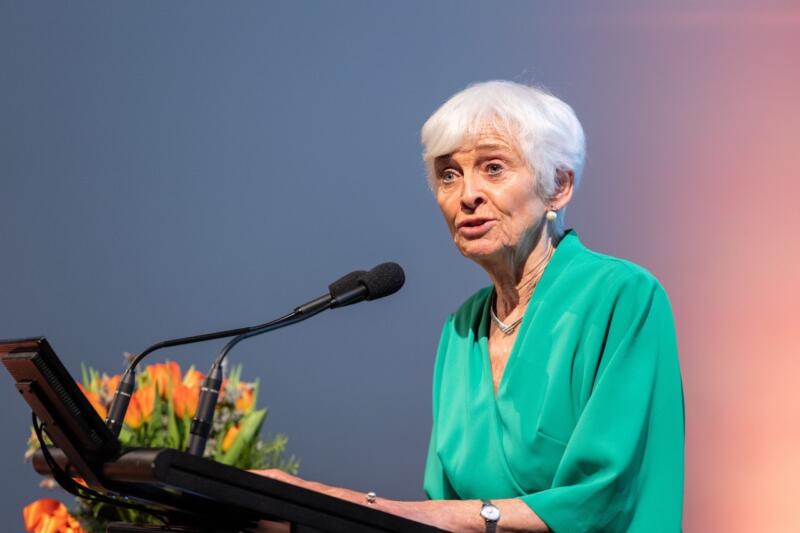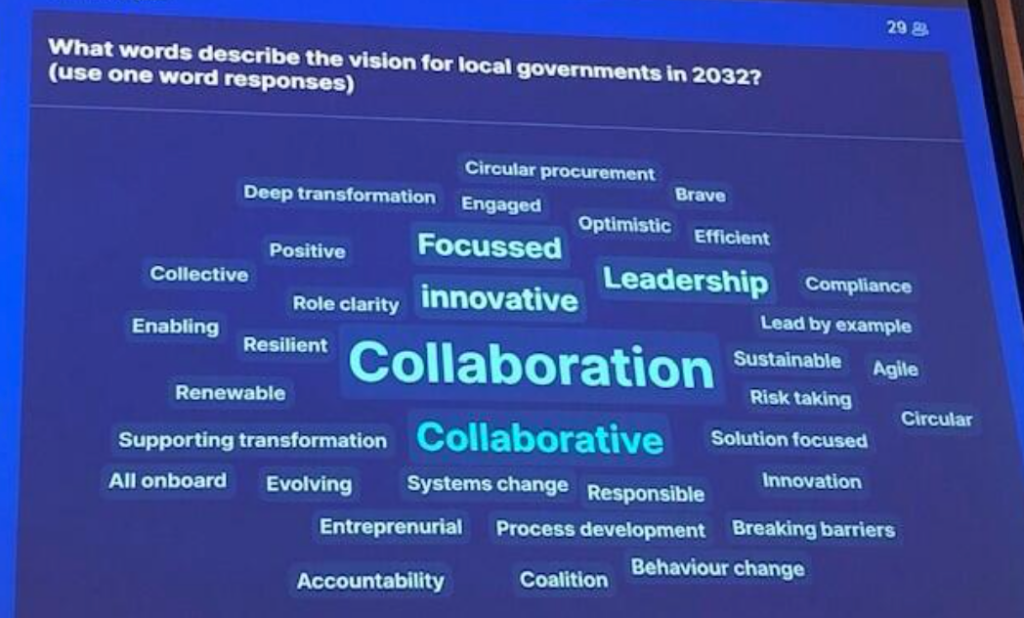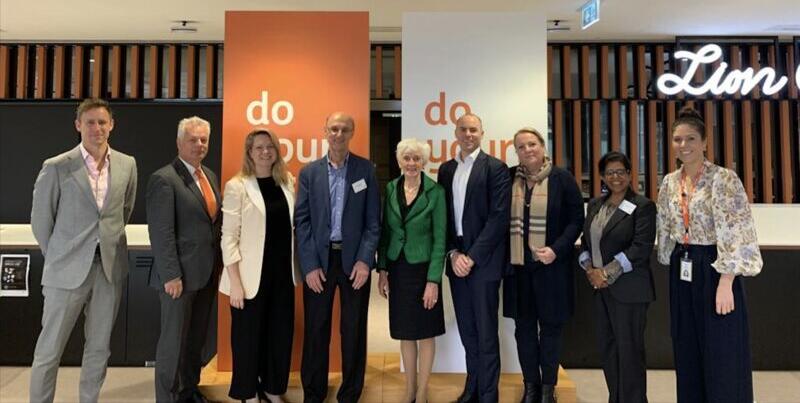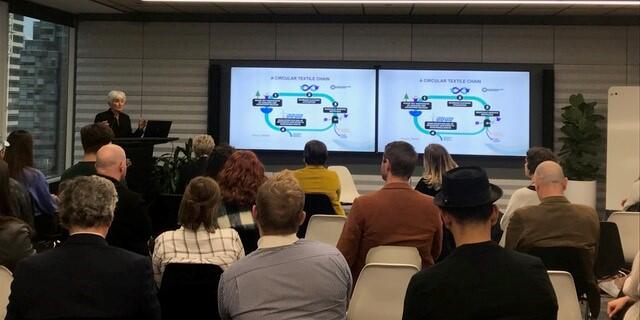Australia Part 2: Circular Cities, Textiles, Research and History
July 19, 2022
In the second edition of her blog in Australia, Jacqueline Cramer reports her experiences during her stay in Melbourne throughout the last week, where she attended multiple workshops and gave speeches about circular buildings, circular procurement, textiles, and the development of circular networks in general. Read the full blog below, and find her speech at the Melbourne Museum about the historic meaning of circular economy at the end of the page.
If you haven’t read the first part of this blog, find it here.

"It was amazing to see how fast people were able to draw a map that was representative of the issues at stake. Collaboration was always at the center of the map."
Jacqueline Cramer
Collaboration is the key to Circular Development
I look back at a productive week in Melbourne where I met many people interested in creating a circular future. This week I attended 3 workshops on circular building, 1 on circular procurement, 1 with 14 local governments on stimulating circular economy at the regional level, 1 with practitioners involved in circular textile, 1 meeting with 80 researchers (partly online), 2 meetings about research in circular economy and 1 meeting with the head of MTIA (comparable with the Dutch Ministry of Infrastructure and Water Management) and 1 special event organized by the Dutch embassy.
The workshops held at various places in the state Victoria took two to four hours each. In general they started with an introduction of the organizers of the event, followed by a presentation from me about the topic addressed. Then the audience was split into sub-groups to discuss the key issues they were interested in and the actions to kick off a circular initiative. As a starting point for the discussion, the participants produced a mind map in 3 minutes about the vision of a circular economy. It was amazing to see how fast people were able to draw a map that was representative of the issues at stake. Collaboration was always at the center of the map.

Photo: an example of a mindmap from the workshops
Australian Enthusiasm for Dutch Circular Solutions
The three workshops on circular building clearly expressed the interest of the participants to jointly set up a circular building initiative. As some key building companies (Built, Mirvac and Landlease) and MTIA were actively involved, the chance that these initiatives will be initiated is high. Researchers were also present and offered to share their expertise. The building sector is clearly one of the key areas in which Australia and The Netherlands can work together. In the Netherlands we already have a wide range of circular initiatives on the way, both in the area of circular design and construction, development of sustainable and circular building materials, recycling (e.g. concrete) and reuse of materials. Various people stated that it offers opportunities for leapfrogging, when Australian companies join forces with Dutch companies. Probably some Australian companies will pay a visit to the Netherlands to get acquainted with what we do. Thus, I want to invite Dutch circular companies that are interested in this cooperation with Australian companies to contact me and I will keep you updated (or contact HCH).
Australian companies and government bodies are not only interested in promising technologies but also in methodologies to measure and monitor circularity, materials’ passport and in building circular initiatives through network governance. For instance, the Dutch Concrete agreement and the Steel agreement in the building sector elicit lots of enthusiasm. Of course, our approach cannot just be copied one on one, but I definitely see possibilities for network governance in Australia as well.
Another topic that generates interest particularly among governments at state and local level is circular procurement. I have shared my experiences with establishing circular procurement in a regional setting (e.g. the Metropolitan Area of Amsterdam) and in product chains (e.g. the concrete sector). I also promoted the worthwhile book of Copper8 ‘Circular procurement in 8 steps’ and the helpful supporting tools of PIANOo. The audience was keen to learn about these experiences as they are convinced that circular procurement can trigger circularity higher on the ladder of circularity than recycling and stimulate the market to introduce circular products.

Photo: Jacqueline Cramer flanked by Planet Ark‘s CEO Paul Klymenko and ING Australia‘s Head of Real Estate Finance Australia Darren Beatty at an event hosted by ING (credits: Planet Ark).
Circular Cities and Textiles
The workshop of 14 local cities organized in Hume, was a great success. I presented here the Dutch experiences in building the circular economy program in the Amsterdam Metropolitan Area. I explained the role of the Amsterdam Economic Board as a triple helix organization and the close cooperation with the 32 municipalities and 2 provinces in the region. The 60 people who attended the workshop, including business representatives, responded enthusiastically to my presentation and directly started to question what they could do together. Besides circular procurement particularly the recycling and reuse of resource streams were selected as key areas.
The workshop with representatives of circular textile was also very lively. There is a sprouting movement in circular textiles launched by newcomers in the market and the charity organization (comparable to Leger des Heils). I will attend more workshops on circular textiles in Sydney and Brisbane. Thereafter I will inform you in a more detailed manner what is happening here on circular textile.

Photo: Cramer’s speech on circular textiles
Circular Research and History
Meeting 80 researchers was inspiring too. The objective of the meeting was to agree upon the establishment of a network of researchers on circular economy. The response was overwhelming: yes, we need to formulate a research program based on the demand of frontrunners in industry and government and the expertise available among the researchers. The group was also positive about developing an organization comparable to the Dutch Groene Brein (meaning ‘Green Brain’), the network of researchers providing quick responses to questions raised by industry, government, or civil society. They were eager to get in touch with the Groene Brein to find out what they do and how they have mobilized funding. Director Antoine Heideveld’s response was positive: “I am pleased to connect you with them to share experiences.“
Finally, we had a beautiful evening event in the Melbourne museum organized by the Dutch embassy to celebrate the 80 years of close cooperation between Australia and The Netherlands. Businesses, government, researchers, and others were invited to this reception, many of which also attended the workshops we had organized. During the event, I gave a keynote speech in which I reflected on circular economy in a historical context. For those who are interested: the full speech is available below. In sum, it was a vibrant week that exceeded my expectations.
In the state of Victoria circular economy falls on fertile ground. Recently the government report ‘Recycling Victoria’ has been issued which generates a lot of activities, research projects, and policy development. Whether other states are also accelerating and how the new federal government takes up circular economy, I will report next time.
